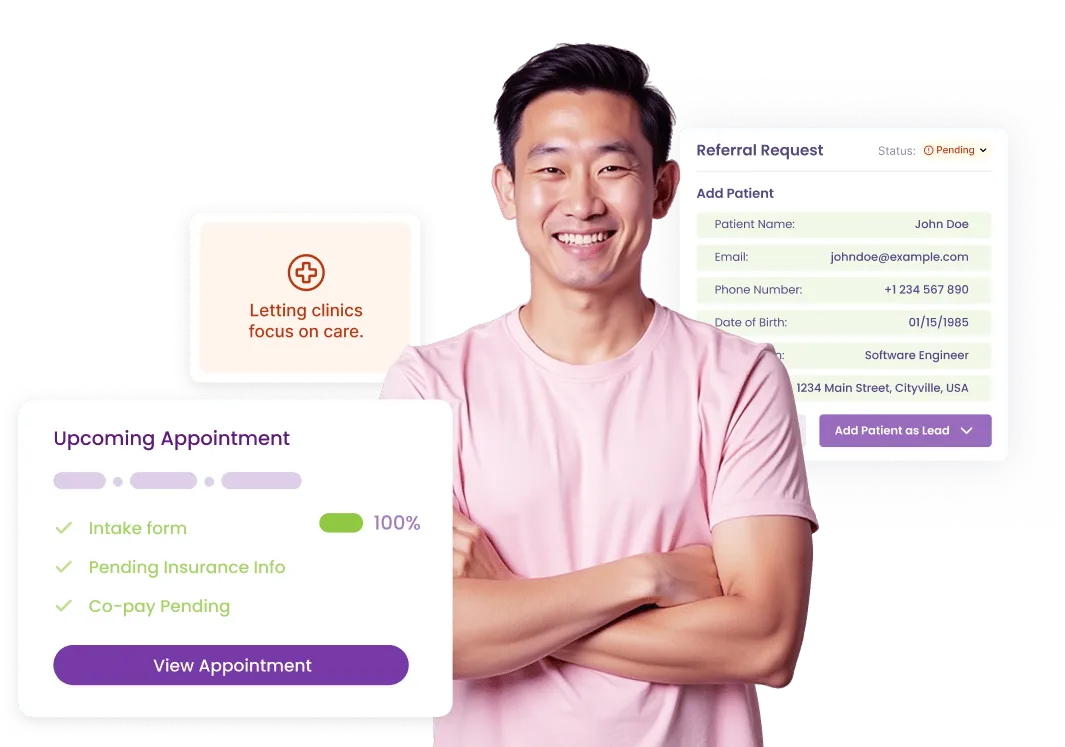96136 – Behavioral Health Assessment / Diagnostic Service
CPT code 96136 represents a distinct mental or behavioral health service, including evaluation, therapy, or care coordination.
What is CPT
96136
?
96136 refers specifically to the assessment of psychological functioning and the administration of standardized testing tools as part of a comprehensive evaluation process within behavioral health services. This code is pivotal in establishing a baseline for treatment, guiding therapeutic interventions, and measuring patient outcomes. Providers must ensure that clinical documentation reflects the specific assessment methods used, aligns with evidence-based practice, and articulates the therapeutic goals established in collaboration with the patient. It is critical to document the start and stop times for services billed under this code, ensuring accurate representation of the duration of the assessment activities performed.

Documentation Tips
When billing for services under 96136, it is essential to document comprehensive details of the assessment process. Key elements to include are:
- Start and Stop Times: Clearly record the duration of the assessment, specifying the beginning and end times to substantiate the billed amount.
- Assessment Instrument or Modality: Indicate the specific tools or methods employed during the assessment, such as standardized questionnaires or observational techniques.
- Clinical Focus: Describe the specific psychological areas being assessed, such as cognitive functioning, emotional regulation, or behavioral issues.
- Patient Response: Document the patient's engagement with the assessment process, noting any relevant observations or reactions that may inform treatment planning.
- Follow-Up Plan: Outline any subsequent steps based on the assessment results, including referrals, additional testing, or interventions.
For scored instruments, maintain copies of the completed assessments as part of the patient’s medical record. In the case of telehealth assessments, it is vital to document informed consent from the patient and provide details about the platform used for the assessment. Adopting a consistent documentation format, such as SOAP (Subjective, Objective, Assessment, and Plan) or DAP (Data, Assessment, and Plan), can enhance audit readiness and ensure compliance with regulatory standards.

At a Glance
- Service Type: Psychological Assessment
- Use Case: Administration of Psychological Tests
- Typical Setting: Outpatient clinics, community mental health centers, or telehealth platforms (subject to payer policies)
- Billing Unit: Per assessment session or per instrument utilized (varies by specific code application)
- Common Pairings: 90791 (Psychiatric Diagnostic Evaluation), 96127 (Brief Emotional/Behavioral Assessment), psychotherapy codes
Billing Examples
Here are examples illustrating the application of 96136 in clinical practice:
- A licensed psychologist administers the Beck Depression Inventory to evaluate a patient’s level of depressive symptoms. The clinician documents the start and stop times, the score obtained, the clinical interpretation of the results, and the implications for the treatment plan. The scored instrument is filed with the patient's records and billed appropriately.
- A neuropsychologist utilizes a battery of standardized tests to assess cognitive deficits in a patient following a traumatic brain injury. The documentation includes details of each test administered, the patient's responses, and a summary of findings that inform subsequent rehabilitation efforts.
- During a telehealth session, a clinician conducts a behavioral assessment using a structured questionnaire. The clinician ensures to document the patient’s consent for the virtual format, the specific tools used, and the therapeutic recommendations based on the assessment results.
Compliance Guidelines
- Prior to billing, it is crucial to verify the coverage policies and authorization requirements of the payer to ensure compliance and avoid denials.
- Documentation must provide clear evidence of medical necessity linking the assessment services to appropriate ICD-10 diagnoses, ensuring that the services rendered are justified.
- Utilize the correct modifiers as necessary, including modifier 95 for telehealth services, to reflect the mode of service delivery accurately.
- Avoid upcoding by selecting the CPT code that accurately represents the documented time and complexity of the service provided, mitigating the risk of audits and penalties.
- Conduct regular audits of billing practices and documentation quality to identify areas for improvement, reduce the likelihood of denials, and enhance overall compliance.
Common ICD-10 Codes
Helpful links for mental health billing and documentation
- F32.9
- F41.1
- R45.0
- Z13.89
- F90.0
Additional Resources
Helpful links for mental health billing and documentation
Related CPT Codes
Helpful links for mental health billing and documentation
Got questions? We’ve got answers.
Need more help? Reach out to us.
Q1: What is the primary purpose of this code?
A: 96136 is utilized for the administration of psychological assessments that align with the code's definition. It is essential that the documentation accurately reflects the services billed.
Q2: Is billing for this code possible via telehealth?
A: Yes, many payers will reimburse for telehealth services as long as the session is synchronous and all necessary documentation, including consent and any applicable modifiers, is appropriately recorded. Always check specific payer policies.
Q3: What types of documentation should providers be prepared to submit to payers?
A: Providers should be ready to present detailed records of time spent, the specific therapeutic techniques or assessment instruments used, patient responses, and a clear connection to a covered ICD-10 diagnosis.
Q4: Can this code be billed alongside other services?
A: Yes, when billing multiple services, it is important to document distinct times and the rationale for each service provided. Utilize add-on codes or adhere to E/M separation rules where applicable to ensure accurate billing.
Q5: What are some common reasons for denial associated with this code?
A: Common denial reasons include inadequate time documentation, insufficient evidence of medical necessity, use of incorrect modifiers, or billing services that exceed frequency limits stipulated by payer guidelines.

